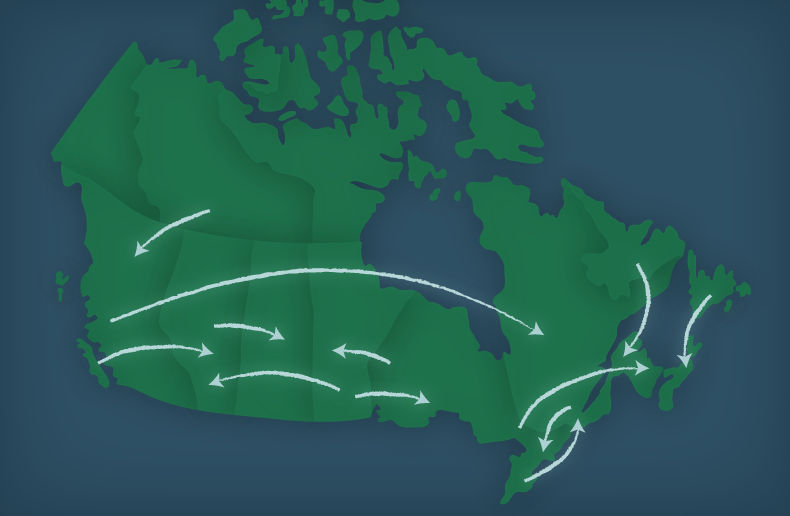Human-centric leadership is going to be even more important in the future than it has been in the past, and companies need to be willing to experiment. Both qualities will be needed to meet customer expectations going forward, say panelists at a recent Reuters Events webinar, Insurance 2021: The Customer Behaviour Changes That Will Stay.
In a discussion about customer needs and company engagement, senior vice president and chief insurance officer from the British Columbia Automobile Association (BCAA), Nathan LaFayette says the need to make connections with customers in new social channels and across different entertainment mediums, while being present at different points in the sales process – not just at checkout – are two trends that successful insurers in the near future will soon need to address.
Consumer forgiveness
More, he says consumer willingness to forgive clunky processes, friction, dropped calls and bad service during the pandemic, is another trend that is quickly coming to an end.
“All of that was forgiven and forgiven quickly. We experienced that with very high net promoter scores, despite not ideal service levels. I think what we’re seeing now is that people’s patience is running out,” he says. “That window of forgiveness is closing.”
In addition to this, senior vice president and chief information officer from Economical Insurance, Tatjana Lalkovic says customers today are expecting and will continue to expect more meaningful interaction with companies than they have in the past. “Patience is not going to be there for simple transactions that should be automated, smooth and seamless,” she agrees. “The focus on more quality conversation is going to really ramp up, I believe. We’ve seen that.”
LaFayette adds too that there is also a need to be thoughtful about everything a company is doing now in a way that maybe wasn’t as obvious in the past.
Entertaining and engaging
“Any industry today, insurance as well, needs to figure out how to meet the customers where the customers are, the way they want to interact with you and learn from that. Adjust to that.” - Nathan LaFayette
In discussing trends, he says companies also need to consider where their customers are actually being entertained and engaged presently. “I would hate to be in network television right now,” he told those gathered. “Any industry today, insurance as well, needs to figure out how to meet the customers where the customers are, the way they want to interact with you and learn from that. Adjust to that.”
To illustrate his point, LaFayette describes a recent YouTube post wherein four YouTubers put a Tesla Model X and Mercedes-Benz G550 in a pulling contest against one another. (Spoiler alert: He says the Tesla outpulled the Mercedes in two out of three tug-of-war trials.) What was most interesting and impressive about the segment, however, was the fact that the video included a 90-second, embedded endorsement for debt consolidation services.
“How do you insert yourself as a company into the equation where the eyeballs are? Companies that learn how to do this are going to be incredibly successful,” he says. “I’m not sure that the debt consolidation offer was polished and exactly as it needed to be, but I had so much respect for the company because they were trying it.”
“The wake-up call was that it’s ok to test. It didn’t feel genuine, it didn’t feel as polished as you’d want it to feel, but they were there and they were making their case,” he adds. “It seemed completely ludicrous that these four YouTubers were explaining debt consolidation services, but you could tell that thought went into it, you could tell that the next one was going to be better and then they were going to nail it. The fact that they’re testing and trying that out was a wakeup call for me, personally.”
Testing and experimentation
He says that testing and experimentation should be planned for during the budgeting process.
“I don’t think it’s fair to put it on the marketing department,” he adds. “I think that systemically, companies need to rethink how they allocate funds for experimentation.”
Some of that experimentation too, he says, should also be directed at the sales process. While he originally thought that a simpler, more streamlined process with fewer clicks, screens and fields was the most ideal way to engage with would-be clients, it has since been discovered that processes designed to be easy are not always simple and trusted by the consumer. “The human-centred design process shined a light on this for us: People want a nudge. They want to feel good about what they’re buying.” More, he says people want to feel in control of their purchases, rather than feel controlled by the process.
“The insurance industry has traditionally put people at the checkout. What we need to do as an industry, is put people right in there when the person is kicking the tire and inquiring about you,” he says. “Once they’ve made their purchase decision they just need that comforting nudge to say, ‘you know what? You’ve understood everything correctly and you’re good to go’, or ‘you might want to think about this.’ If you’re waiting until that final stage to insert yourself and put your people into the equation, it’s too late. They (the consumer) have either committed to the wrong thing or they’ve dropped off and left. We think whoever figures out how to provide that nudge, how to provide that confidence when they actual product is being investigated, that’s who comes out on top.”




